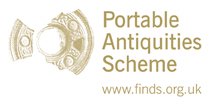Server check!
You are on the training database
Wheeled vehicle equipment
Wagons, and other similar wheeled vehicles were known to have been used across Northern Europe, with a particular concentration of early Urnfield finds from southern Germany. There are at least a dozen known four-wheeled wagon burials are known datable to the Urnfield culture (1300-750 BC), and the unearthing of related wheeled vehicle equipment in Britain, led Brendan O'Connor to suggest a date of c.1,140-1,020 BC (Wilburton Park metalwork phase) as the point when wheeled vehicles made their first appearance.
Nave bands
Nave bands were used to strengthen the hub of a spoked wheels and were designed to prevent the wheel from splitting.
Dating and distribution
Date: 950BC-750BC
Distribution: Few have been discovered
Example

British Museum Registration number: WG.1288
Bronze nave band: annular band cast with two ribs and a spreading flange; used to strengthen the hub of a wooden spoked wheel and prevent splitting; surface corroded; green.
Phalerae
Phalerae are bronze disks with a central disc attachment which sometimes does not survive. Some Phalerae in Bavaria have been found in graves with horse gear indicating that they had some connection to horses. Perhaps they decorated horse's harnesses but we cannot be sure and they could be some sort of personal ornament or shield bosses.
Dating and distribution
Date: 950-800 BC
Distribution: England, Ireland and Wales
Distribution: England, Ireland and Wales
Example

British Museum registration number: WG.1290
Copper alloy phalera: one of a pair; cast bronze shallow-domed disc with central perforation; four loops on the reverse allowing attachment to straps or surface of fabric; surface corroded; green.
References
- O'Connor, B. (1975). Six prehistoric phalerae in the London museum and a discussion of other phalerae from the British Isles. The Antiquaries Journal. 55, 215-226.


